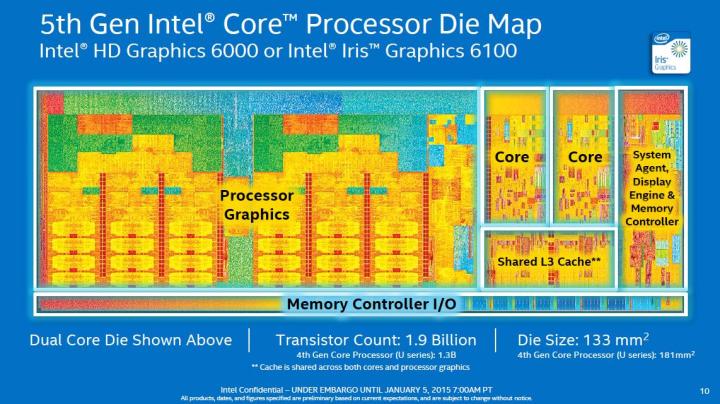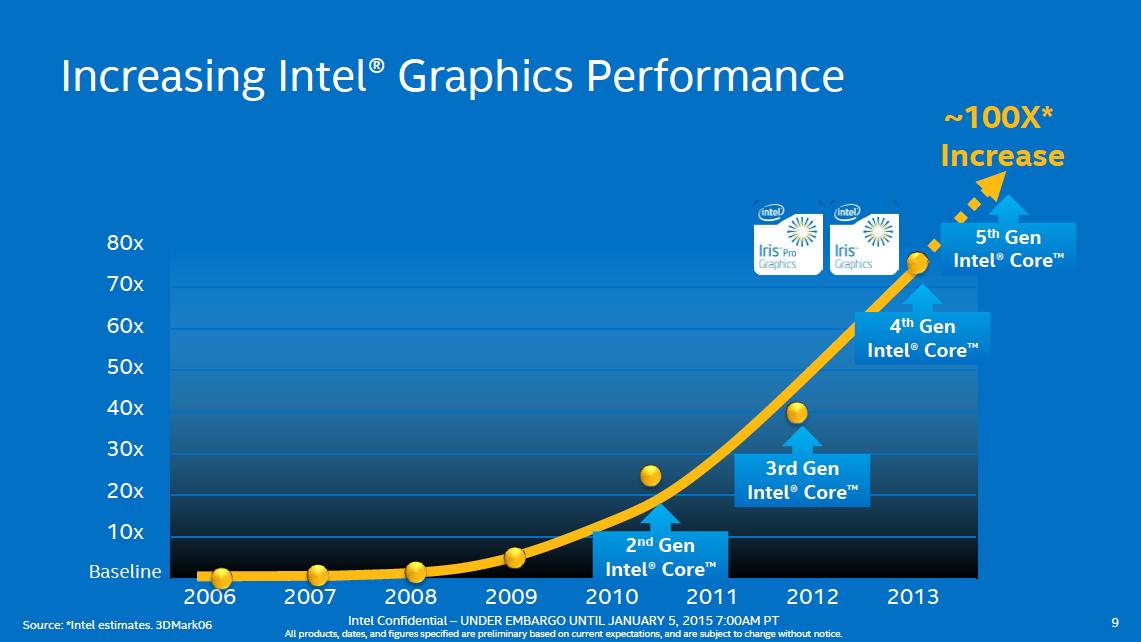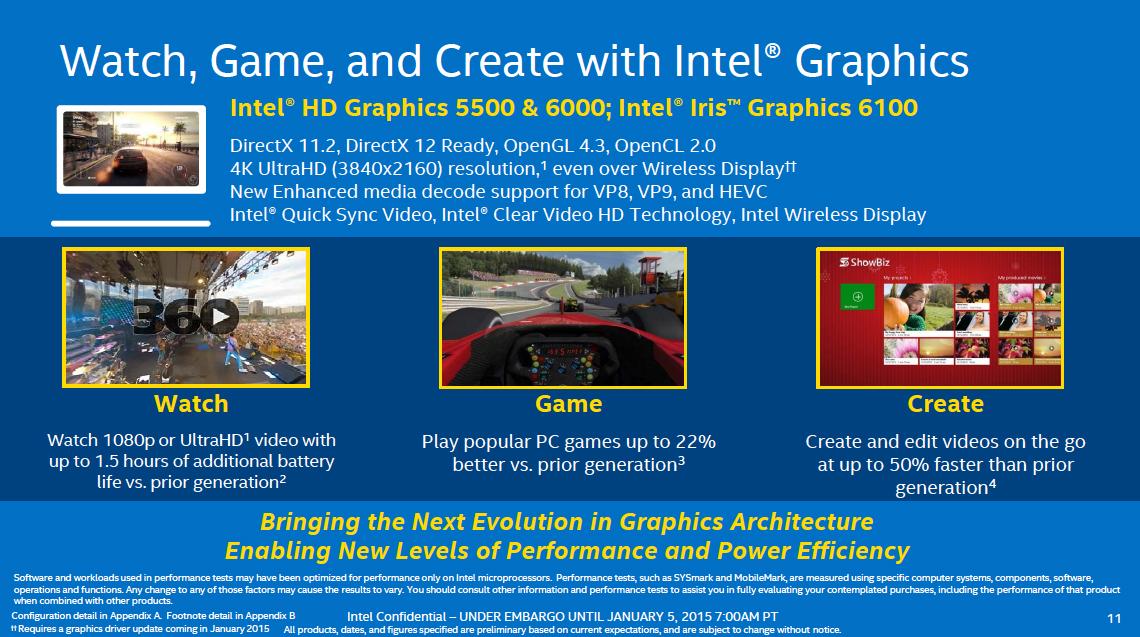
That helps Intel HD 5500, 6000 and Iris 6100 graphics hit new heights of performance. The company claims the Core i7-5600U, which has HD 5500 integrated graphics, is up to 22 percent quicker than the old Core i7-4600U, which has Intel HD 4400. A leap that large will be readily noticeable in games, and HD 6600/Iris 6100 should prove quicker still.
All three graphics solutions support a wide variety of modern resolutions and standards. 4K is now standard, though unfortunately runs at a refresh rate of 24Hz, which is quite low. The chip is also DirectX 12 “Ready,” which means it supports everything currently announced for the standard; it hasn’t been finalized, however, so an unsupported feature may still sneak in. DirectX 11.2, OpenGL 4.3 and Open CL 2.0 are fully compatible.
Media decode support now includes VP8, VP9 and HEVC, though these are enabled in software rather than hardware. Intel Quick Sync Video, Intel Clear Video HD and Intel Wireless Display 2.0 are part of the chips, as well. Intel claims these enhancements improve video editing performance by up to 50% in CyberLink’s MediaEspresso.
Intel’s HD 5500 graphics will appear in six processors including the i3-5010U, i3-5005U, i5-5200U, i5-5300U, i7-5500U and i7-5600U. HD 6000 will power the i5-5250U, i5-5350U, i7-5550U and i7-5650U. The Iris 6100 chip, meanwhile, will show up in the i3-5157U, i5-5257U, i5-5287U and i7-5557U.
While Intel has broken its solutions into three distinct models, two solutions with the same name may not perform identically, as integrated graphics in less powerful processors have slightly lower clocks than those in more powerful CPUs. A Core i3-5157U with Iris 6100, for example, has a maximum frequency of 1,000MHz, while a Core i7-5557U with the same graphics solution has a slightly higher maximum of 1,050MHz.




